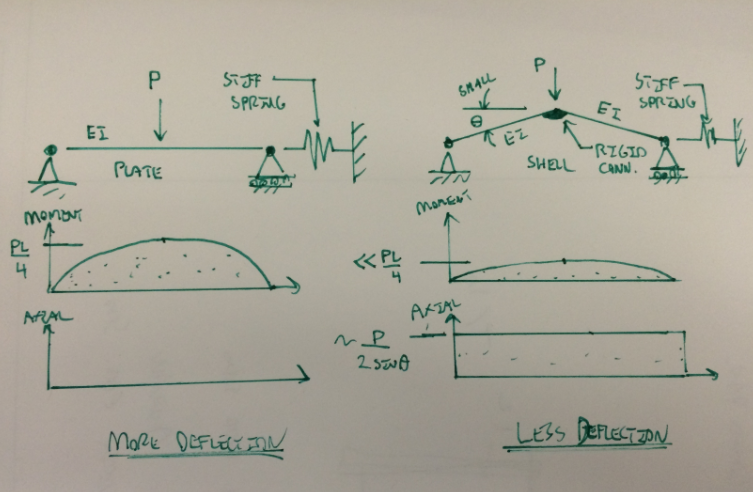Hello!
I try to understand why a shell is stiffer than a plate. I've read a note on the internet explaining that moving a point out of the surface of a thin shell like an egg takes more energy as the adjacent fibers have to be stretched, unlike a plate.
But it does not make much sense, and I cannot really see why with physical sense why it is stiffer. does that mean that a shell is less likely to buckle than a plate?
Does someone has an clearer explanation for that?
Thanks a lot for your help!
I try to understand why a shell is stiffer than a plate. I've read a note on the internet explaining that moving a point out of the surface of a thin shell like an egg takes more energy as the adjacent fibers have to be stretched, unlike a plate.
But it does not make much sense, and I cannot really see why with physical sense why it is stiffer. does that mean that a shell is less likely to buckle than a plate?
Does someone has an clearer explanation for that?
Thanks a lot for your help!

